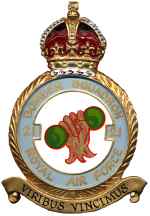
Simviation Forums
Flight Simulator and other chat













The Pitot tube (named after Henri Pitot in 1732) measures a fluid velocity by converting the kinetic energy of the flow into potential energy. It is not just a simple tube, having 2 concentric tubes the outer tube sealed at the end and pierced with equidistance holes around it's circumference.The conversion takes place at the stagnation point, located at the Pitot tube entrance. A pressure higher than the free-stream (i.e. dynamic) pressure results from the kinematic to potential conversion. This "static" pressure is measured by comparing it to the flow's dynamic pressure with a differential manometer. Air is really gaseous liquid, so the Pitot tube on an airplane can be used to measure things like airspeed and as a comparitor for the barometric altimeter.
The Flight Director (FD) is a modern version of the old Artificial Horizon.
Welcome to the science of flying a simulator LOL

Users browsing this forum: No registered users and 149 guests